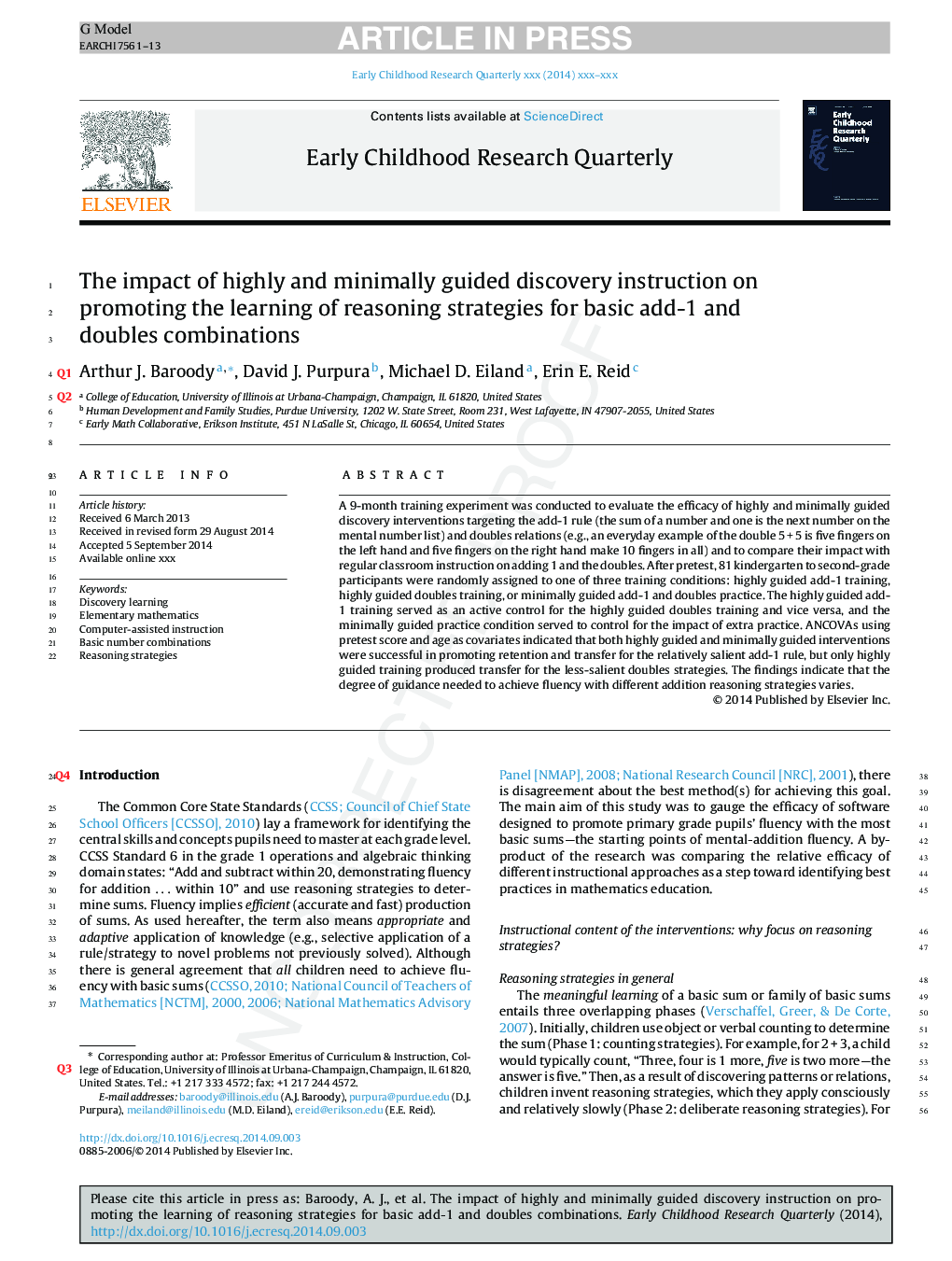| Article ID | Journal | Published Year | Pages | File Type |
|---|---|---|---|---|
| 10313494 | Early Childhood Research Quarterly | 2015 | 13 Pages |
Abstract
A 9-month training experiment was conducted to evaluate the efficacy of highly and minimally guided discovery interventions targeting the add-1 rule (the sum of a number and one is the next number on the mental number list) and doubles relations (e.g., an everyday example of the double 5Â +Â 5 is five fingers on the left hand and five fingers on the right hand make 10 fingers in all) and to compare their impact with regular classroom instruction on adding 1 and the doubles. After pretest, 81 kindergarten to second-grade participants were randomly assigned to one of three training conditions: highly guided add-1 training, highly guided doubles training, or minimally guided add-1 and doubles practice. The highly guided add-1 training served as an active control for the highly guided doubles training and vice versa, and the minimally guided practice condition served to control for the impact of extra practice. ANCOVAs using pretest score and age as covariates indicated that both highly guided and minimally guided interventions were successful in promoting retention and transfer for the relatively salient add-1 rule, but only highly guided training produced transfer for the less-salient doubles relations. The findings indicate that the degree of guidance needed to achieve fluency with different addition reasoning strategies varies.
Related Topics
Social Sciences and Humanities
Psychology
Applied Psychology
Authors
Arthur J. Baroody, David J. Purpura, Michael D. Eiland, Erin E. Reid,
